Why SpaceX suits look so sleek, and NASA’s look so clunky
When Jared Isaacman popped out of the hatch of the Dragon spaceship Resilience and into the vacuum of space, he really looked pretty spiffy. For the first time in history, a private citizen got (partly) out of a spaceship with nothing between him and our Pale Blue Dot but a sleek, tightly fitting white spacesuit. It wasn’t a space walk—like the one Alexei Leonov took on March 18, 1965, the first-ever by a human—as much as a ”lean out and peek,” but he looked like a guy from a sci-fi movie nonetheless. [Image: SpaceX] Everyone who saw it probably thought the same: That suit looks nothing like the ones NASA astronauts use when venturing out of the International Space Station. The SpaceX Extra-Vehicular Activity (EVA) space overalls looks like the future. NASA’s Extravehicular Mobility Unit (EMU) feels old and outdated—like an oversize relic from the 1980s. Alexei Leonov, 1965 [Photo: Central Press/Getty Images] But don’t be blinded by the imperial stormtrooper bling. There are plenty of reasons why their designs look so different. While the EMU is currently more rugged and dependable than Elon Musk’s stark white space undies, that doesn’t mean the SpaceX version is bad. Each suit has its use, and SpaceX’s is a great first version that will evolve to keep humans safe on journeys beyond the confines of the Dragon Crew’s hatch. [Image: SpaceX] What’s different The difference between SpaceX’s EVA suit and NASA’s EMU isn’t so much about aesthetic choices as it is the result of their respective functions, features, and history. At their core, each suit was engineered for different purposes. Also, both suits are at different stages of development, with the EMU being the result of decades of experience and refinements, with very specific mission requirements in mind. On the other hand, the sleekness of SpaceX’s EVA suit is the result of being designed for short exposures to the rigors of space. You can find a parallel in the suits designed by NASA for the Gemini missions in the 1960s. They looked much sleeker than the suits used for Apollo, which required longer stays, where astronauts would be exposed to radiation and extreme changes in temperature. (Personally, I find the Mercury suit worn by John Glenn to be the best-looking space suit of all.) Astronaut Edward White during the first American EVA performed during Gemini 4 flight, 1965 [Photo: NASA] The basic thing to remember is that NASA’s EMU is built for long-duration space walks, where astronauts are doing heavy-duty work. It has been used by astronauts on the International Space Station for years and was designed to withstand the demands of work sessions in space that can last up to eight hours or longer. It gives complete freedom of movement without any other link to the space station beyond a safety tether. A crew member in a mock-up of the Space Shuttle Extravehicular Mobility Unit (EMU) and Manned Maneuvering Unit (MMU), the NASA astronaut propulsion unit, August 17, 1979 [Photo: Space Frontiers/Getty Images] The EMU is bulky because it needs to be bulky. The heft reflects the need for extended life support, a comprehensive protection system, and multiple layers of insulation. Safety is the priority, and every element of the EMU was engineered with long-term survival in mind under extreme conditions. It’s like having a personal spaceship all around you. SpaceX’s EVA suit, however, is built for shorter times in the vacuum of space. The first version’s sleek, modern design is optimized for space tourism, prioritizing comfort, mobility, and accessibility—it doesn’t require the bells and whistles of the EMU. [Image: NASA] Space suit fabrics The EMU’s outermost skin is called Ortho-Fabric, which combines Kevlar, Nomex, and Gore-Tex. These materials are not only protective, but incredibly durable. Kevlar is used in bulletproof vests; it’s there to make sure the astronaut doesn’t get punctured by micrometeoroids or space debris. Nomex is a flame-resistant material, which may seem odd in space, but it’s vital in case the suit encounters superheated objects or malfunctions that create fire hazards. And Gore-Tex helps the suit to breathe, allowing moisture from the astronaut’s body to escape while blocking any external liquids. In total, the EMU uses 14 layers of material. Astronaut David A. Wolf, ca. 2002 [Photo: NASA] The NASA suit has another layer under it that looks like white pajamas: the Liquid Cooling and Ventilation Garment (LCVG). This full-body clothing has tubes to circulate water around an astronaut’s body, which keeps them from overheating during long space walks. Under direct sunlight, the ISS reaches up to 250 degrees Fahrenheit, going down to minus-250 degrees Fahrenheit in the dark. The LCVG has been an essential part of NASA’s suit design for years, and remains one of the most reliable ways to regulate body temperature in space. The suit also contains power heaters in the glove so astronau
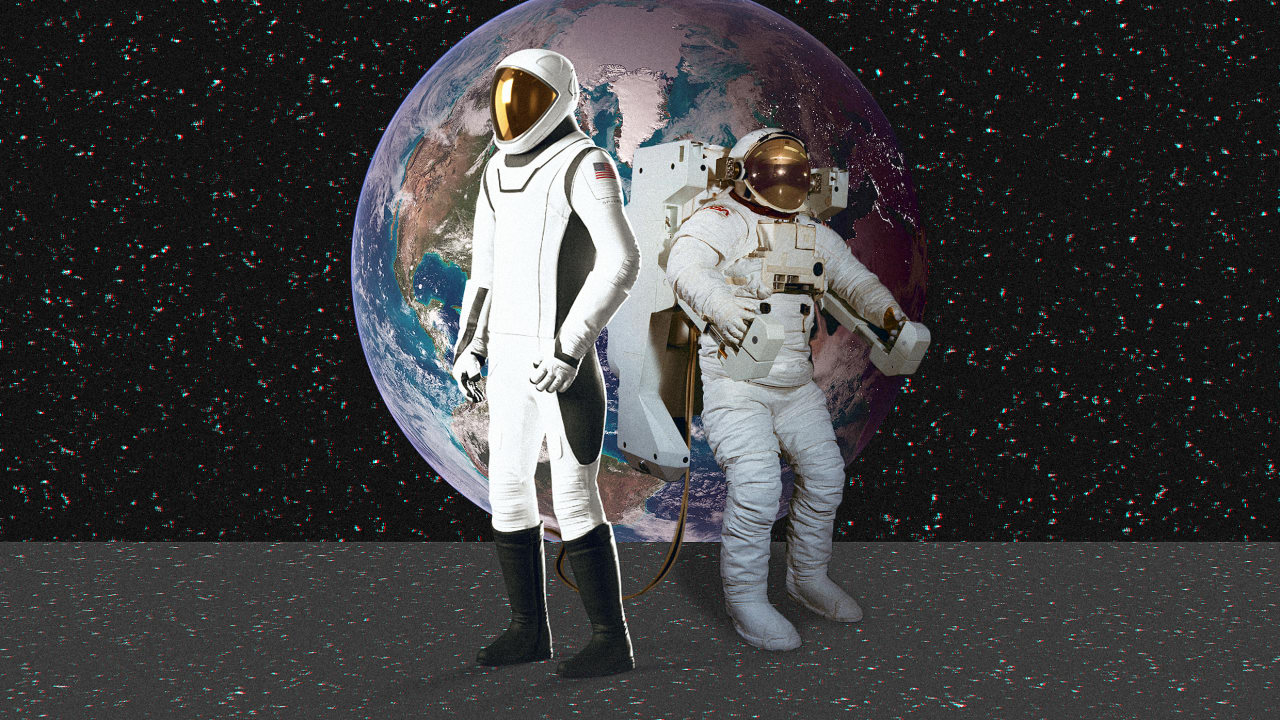
When Jared Isaacman popped out of the hatch of the Dragon spaceship Resilience and into the vacuum of space, he really looked pretty spiffy. For the first time in history, a private citizen got (partly) out of a spaceship with nothing between him and our Pale Blue Dot but a sleek, tightly fitting white spacesuit. It wasn’t a space walk—like the one Alexei Leonov took on March 18, 1965, the first-ever by a human—as much as a ”lean out and peek,” but he looked like a guy from a sci-fi movie nonetheless.

Everyone who saw it probably thought the same: That suit looks nothing like the ones NASA astronauts use when venturing out of the International Space Station. The SpaceX Extra-Vehicular Activity (EVA) space overalls looks like the future. NASA’s Extravehicular Mobility Unit (EMU) feels old and outdated—like an oversize relic from the 1980s.

But don’t be blinded by the imperial stormtrooper bling. There are plenty of reasons why their designs look so different. While the EMU is currently more rugged and dependable than Elon Musk’s stark white space undies, that doesn’t mean the SpaceX version is bad. Each suit has its use, and SpaceX’s is a great first version that will evolve to keep humans safe on journeys beyond the confines of the Dragon Crew’s hatch.
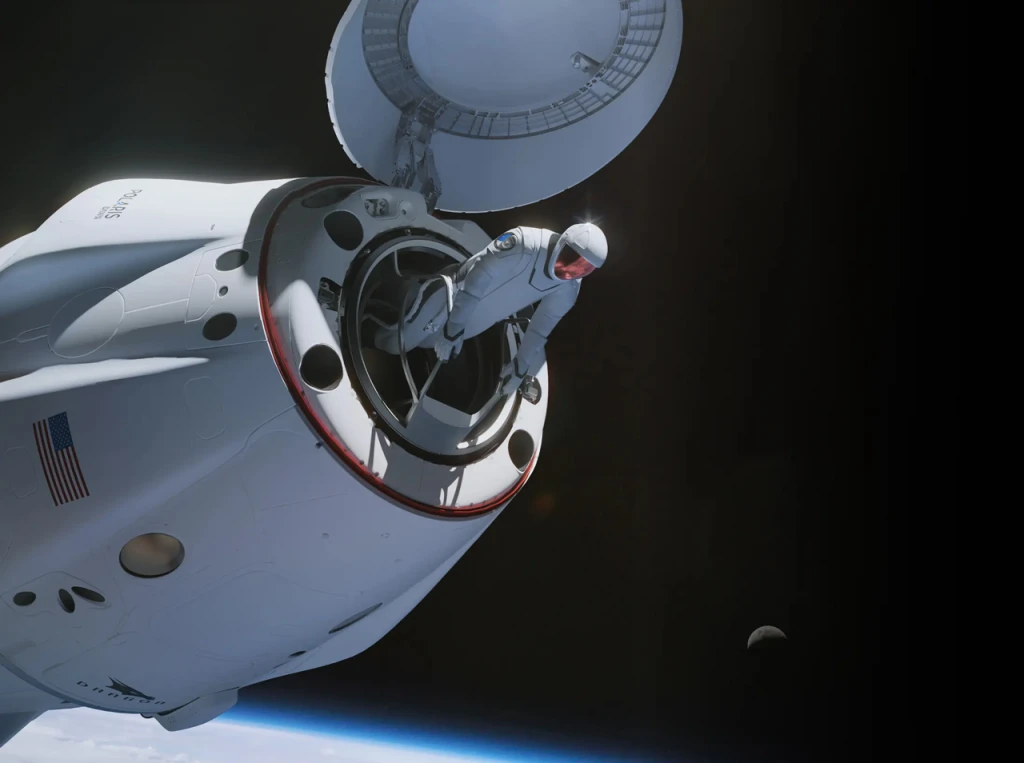
What’s different
The difference between SpaceX’s EVA suit and NASA’s EMU isn’t so much about aesthetic choices as it is the result of their respective functions, features, and history. At their core, each suit was engineered for different purposes. Also, both suits are at different stages of development, with the EMU being the result of decades of experience and refinements, with very specific mission requirements in mind.
On the other hand, the sleekness of SpaceX’s EVA suit is the result of being designed for short exposures to the rigors of space. You can find a parallel in the suits designed by NASA for the Gemini missions in the 1960s. They looked much sleeker than the suits used for Apollo, which required longer stays, where astronauts would be exposed to radiation and extreme changes in temperature. (Personally, I find the Mercury suit worn by John Glenn to be the best-looking space suit of all.)

The basic thing to remember is that NASA’s EMU is built for long-duration space walks, where astronauts are doing heavy-duty work. It has been used by astronauts on the International Space Station for years and was designed to withstand the demands of work sessions in space that can last up to eight hours or longer. It gives complete freedom of movement without any other link to the space station beyond a safety tether.

The EMU is bulky because it needs to be bulky. The heft reflects the need for extended life support, a comprehensive protection system, and multiple layers of insulation. Safety is the priority, and every element of the EMU was engineered with long-term survival in mind under extreme conditions. It’s like having a personal spaceship all around you.
SpaceX’s EVA suit, however, is built for shorter times in the vacuum of space. The first version’s sleek, modern design is optimized for space tourism, prioritizing comfort, mobility, and accessibility—it doesn’t require the bells and whistles of the EMU.
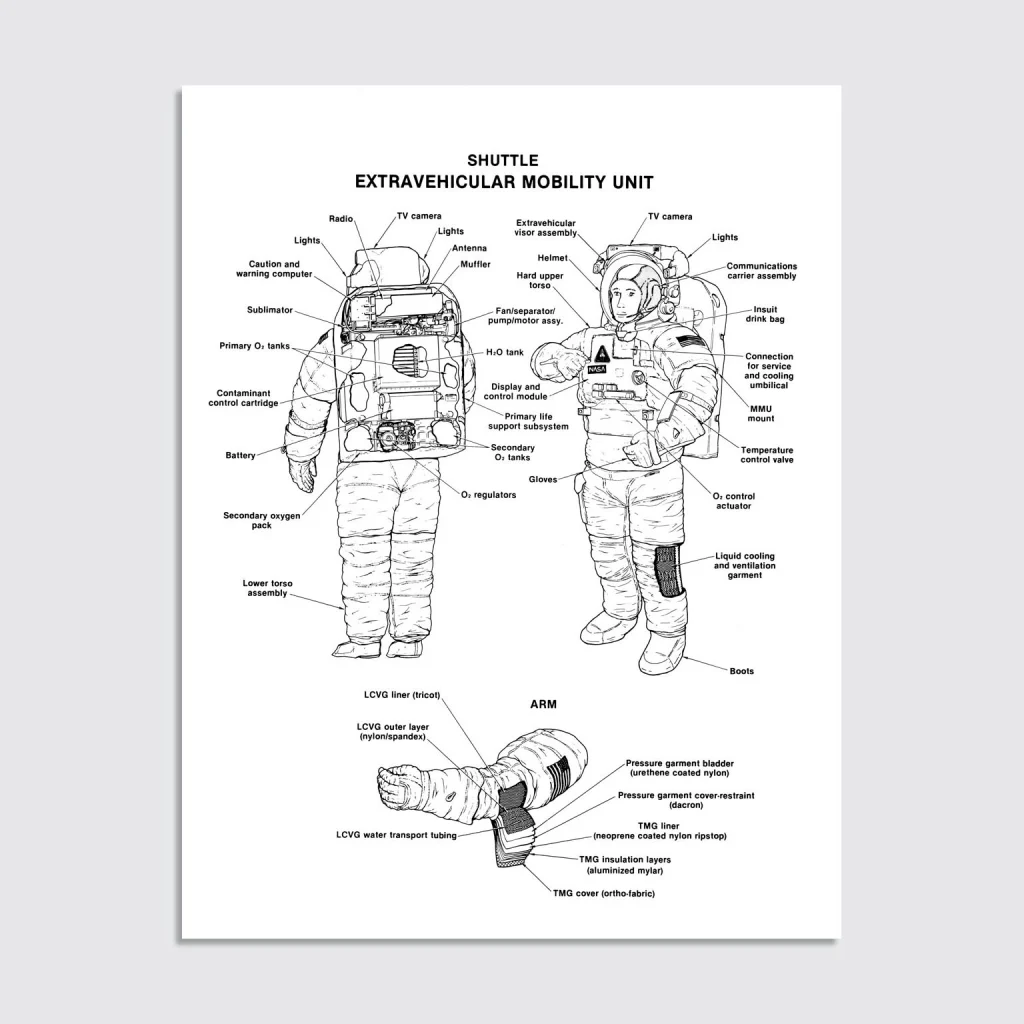
Space suit fabrics
The EMU’s outermost skin is called Ortho-Fabric, which combines Kevlar, Nomex, and Gore-Tex. These materials are not only protective, but incredibly durable. Kevlar is used in bulletproof vests; it’s there to make sure the astronaut doesn’t get punctured by micrometeoroids or space debris. Nomex is a flame-resistant material, which may seem odd in space, but it’s vital in case the suit encounters superheated objects or malfunctions that create fire hazards. And Gore-Tex helps the suit to breathe, allowing moisture from the astronaut’s body to escape while blocking any external liquids. In total, the EMU uses 14 layers of material.

The NASA suit has another layer under it that looks like white pajamas: the Liquid Cooling and Ventilation Garment (LCVG). This full-body clothing has tubes to circulate water around an astronaut’s body, which keeps them from overheating during long space walks.
Under direct sunlight, the ISS reaches up to 250 degrees Fahrenheit, going down to minus-250 degrees Fahrenheit in the dark. The LCVG has been an essential part of NASA’s suit design for years, and remains one of the most reliable ways to regulate body temperature in space. The suit also contains power heaters in the glove so astronauts can keep their hands warm when the ISS goes behind the Earth as it travels at 17,900 mph, completing an orbit every 95 minutes.
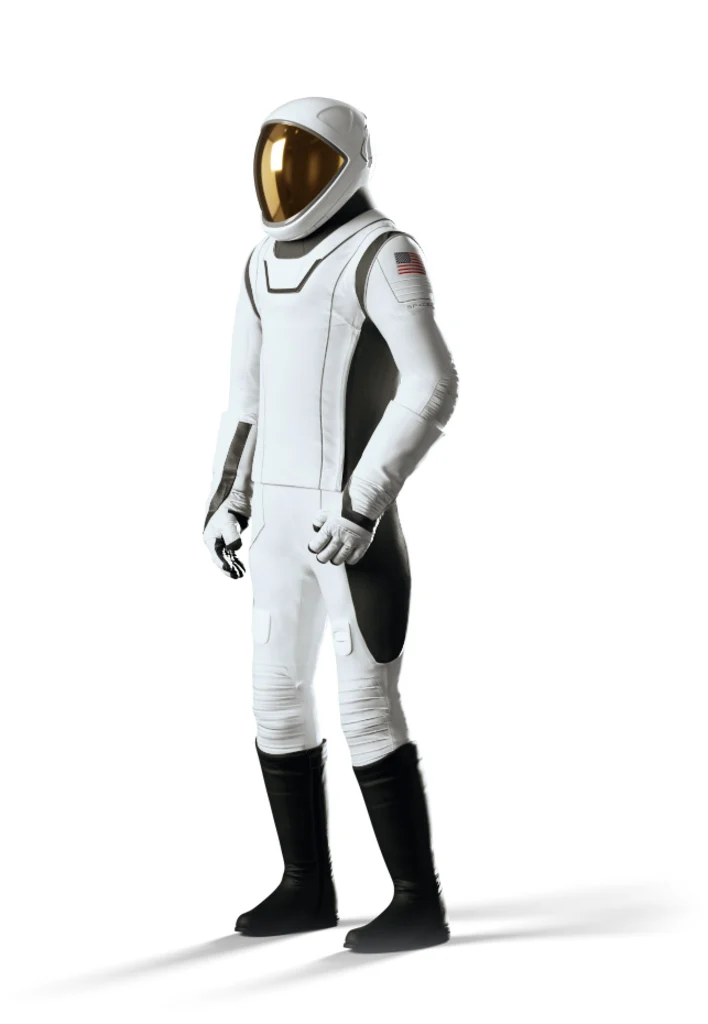
What’s inside a SpaceX EVA suit
The SpaceX EVA suit created for the Polaris Dawn missions, spearheaded by Isaacman, also uses multiple layers of materials borrowed from their Falcon rocket interstage and Dragon spacecraft trunk. The company won’t specify exactly what these material are, but does say that the materials are designed to provide passive thermal regulation and structural integrity.
In a video posted to X, SpaceX’s principal spacesuit engineer, Erik Kraus, says that the suit is “like a suit of armor made of fabric.” The suit remains soft while the astronaut is in the pressurized environment of the Dragon capsule, but the material hardens when the suit is pressurized for venturing outside of the spacecraft. This required the design of special rotational joints to allow the movement of the arms (although—unlike the EMU—it didn’t look very comfortable or agile when Isaacman maneuvered his upper body out of the capsule). The EVA also has a metallic Faraday layer to shield the astronaut from external electric fields.
SpaceX’s suit doesn’t use a heat exchange system; instead it uses phase-change materials, which releases or absorbs energy when it changes its state to heat or cool as the astronaut moves between sunlight and shadow. While these fabrics help regulate temperature without the need for dedicated cooling systems, it is not suitable for long spacewalks or hard work.
The visors
Each suit has a distinct helmet. The EMU features a gold-coated visor, designed to reflect the sun’s powerful ultraviolet rays and keep astronauts safe from radiation for long space walks. It’s been time-tested through hundreds of missions. The astronauts manually adjust the sunshades on the visor depending on their environment.

The shape of the visor is larger than SpaceX’s. To check any information about the suit, the astronaut has to look down at an alphanumeric display that is strategically placed on the suit, near the chest. According to NASA, an attachment equipped with flood lamps is placed above the visor so astronauts can see clearly in payload bays or whenever it’s dark.
SpaceX seems to win this round—at least when it comes to the technology involved. There’s a Heads-Up Display (HUD) built directly into the visor, which provides real-time data, such as oxygen levels, suit pressure, and battery life, without needing to look down at any instrumentation. It’s like having a combat fighter cockpit on your face.
The 3D-printed visor is made of polycarbonate coated with indium tin oxide and copper. This coating helps block UV light and protect astronauts from infrared radiation, although it may not be as effective as NASA’s gold coating. This cheaper option is probably a result of SpaceX plans for the suit, which includes mass-manufacturing future versions to match Musk’s visions for bases on Mars and the moon.

Life support systems
NASA’s EMU looks bulky because it carries a Portable Life Support System (PLSS), a self-contained backpack that monitors the astronaut’s vitals, supplies oxygen, scrubs out carbon dioxide, regulates humidity, and maintains a perfect temperature through a layer of radiators that extend throughout the suit’s fabric.
This complex system is a mini spaceship in its own right, designed to support the astronaut for hours in space with multiple backup systems. If the primary oxygen supply fails, there’s another one. If temperature control falters, the suit has redundancies to keep the astronaut alive. This level of support is critical for the long-duration missions NASA undertakes, but it adds significant weight and size to the suit. Fortunately, weight is not that important in orbit or on the moon.
SpaceX’s EVA suit, in contrast, is more lightweight because it relies on the Dragon Crew spacecraft’s life support system. The suit itself doesn’t need to carry support gear. Like the Soviet cosmonauts or the Gemini astronauts, there’s a long tube that tethers the SpaceX astronauts to the spaceship, feeding them oxygen and energy, and scrubbing out CO2. That’s why the suit can afford to be slimmer and more agile. Musk’s company is planning to eventually develop more independent life-support systems like NASA’s PLSS.
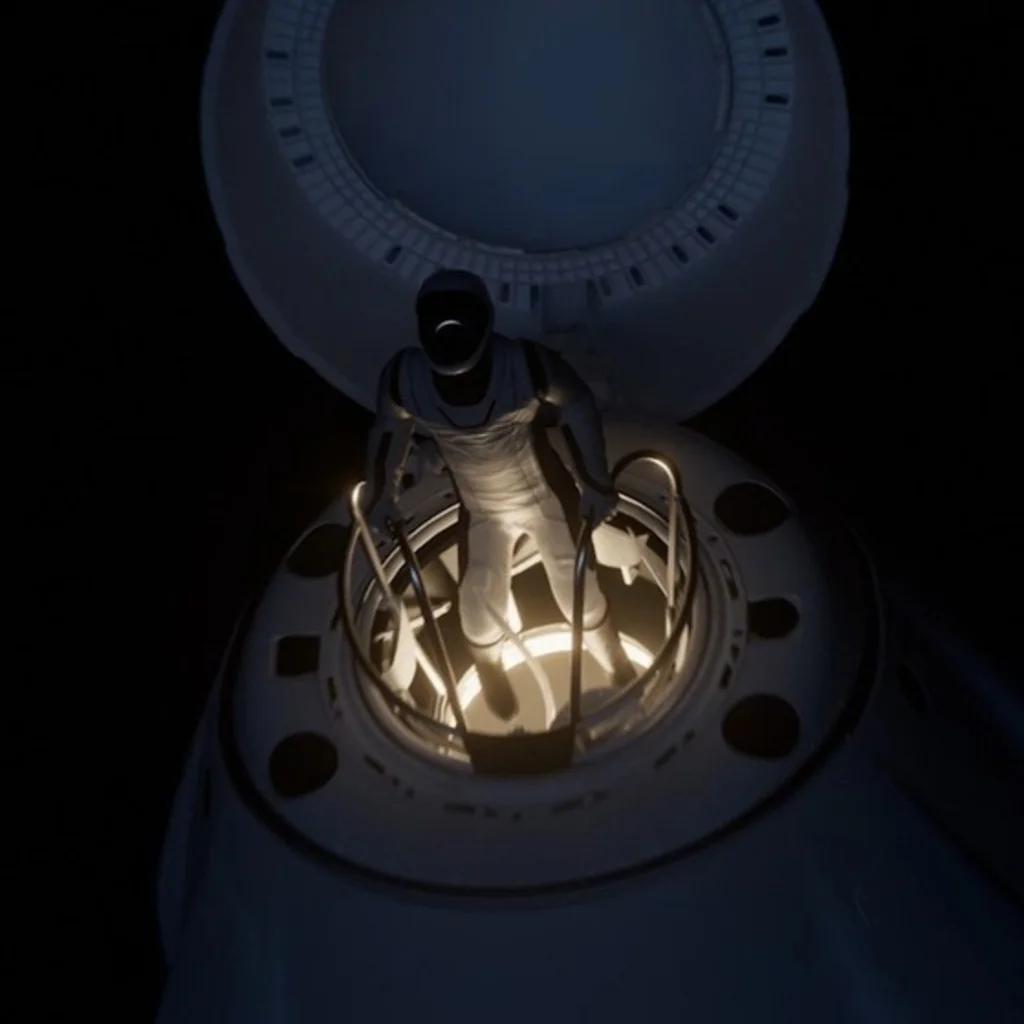
A path for the future
As we head into a new era of space exploration, both NASA and SpaceX will keep evolving their designs. The SpaceX EVA suit is at its very early stages, which perhaps is a reason why Isaacman didn’t venture past the relative safe space of the Resilience’s tip hatch. Its sleek, thin design will most likely change with time as it still has a long way to go before it matches the reliability and durability of NASA’s EMU. At the same time, NASA’s suit will keep getting new generations that are lighter, less bulky, and more flexible.
SpaceX’s vision for the future includes mass-producing suits that are scalable for missions to the moon and Mars, but that will require further developments, particularly in life-support systems and durability for longer missions. As SpaceX senior manager Chris Trigg puts it: “The goal is for astronauts to feel like they’re just wearing everyday clothes while exploring the solar system. Whether SpaceX can maintain that fancy stormtrooper look while increasing functionality for long-duration missions remains to be seen.”






















